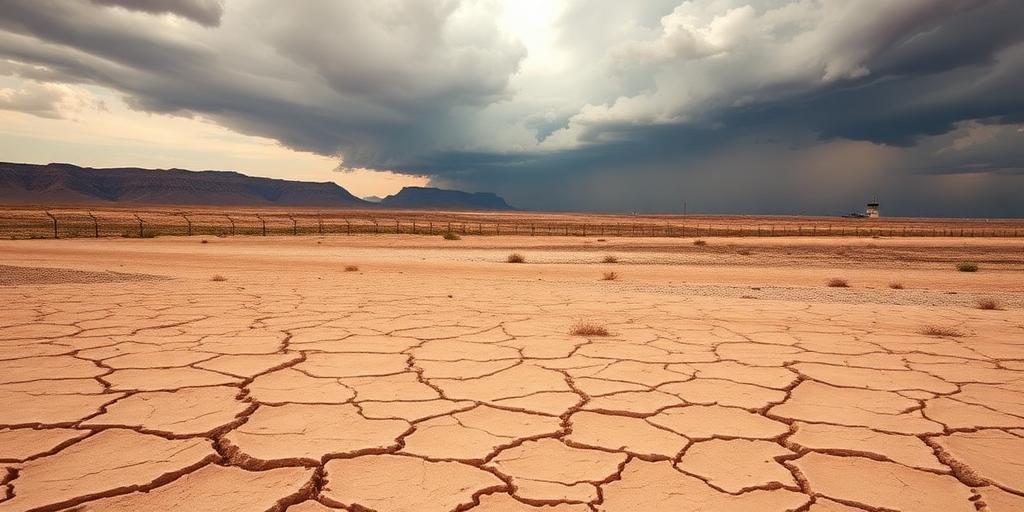Water scarcity is an increasingly critical global issue, exacerbating tensions and conflicts, particularly in regions sharing transboundary water resources. This article explores the multifaceted impact of water scarcity on border disputes, examining how dwindling water supplies can intensify existing political, economic, and social challenges.
Understanding Water Scarcity
Water scarcity occurs when the demand for water exceeds the available supply over a certain period or when poor water quality restricts its use. Several factors contribute to this phenomenon:
- Climate Change: Altered precipitation patterns, prolonged droughts, and increased evaporation rates reduce available water resources.
- Population Growth: Increasing populations place greater demands on existing water supplies for domestic, agricultural, and industrial use.
- Economic Development: Industrialization and agricultural expansion often lead to increased water consumption and pollution.
- Inefficient Water Management: Poor infrastructure, wasteful irrigation practices, and inadequate water governance contribute to water scarcity.
Water Scarcity and Border Disputes
When water resources are scarce, nations sharing rivers, lakes, or aquifers may find themselves in conflict over allocation and usage rights. The following points illustrate how water scarcity can fuel border disputes:
- Resource Competition:
- Unequal Access: Disputes arise when one nation has better access to or control over shared water resources than another.
- Infrastructure Development: Construction of dams, irrigation projects, or water diversion systems by one nation can reduce water availability for downstream countries, leading to tensions.
- Economic Impacts:
- Agricultural Losses: Water scarcity can severely impact agriculture, leading to crop failures, food insecurity, and economic instability, particularly in agrarian societies. This can exacerbate existing socio-economic grievances and fuel cross-border migration, further straining relations.
- Industrial Decline: Water-intensive industries, such as manufacturing and energy production, may suffer, leading to job losses and economic decline, intensifying regional disparities and creating potential flashpoints.
- Political Instability:
- Internal Conflicts: Water scarcity can trigger internal conflicts within nations, as different regions or communities compete for limited resources. These internal tensions can spill over into neighboring countries, particularly in border regions.
- Cross-Border Migration: Displacement due to water scarcity can lead to increased migration across borders, placing additional strain on neighboring countries and potentially destabilizing border regions.
Case Studies
Several regions around the world exemplify the impact of water scarcity on border disputes:
- The Nile River Basin: The Nile, shared by eleven countries, has been a source of tension for decades. Egypt, heavily reliant on the Nile for its water supply, has expressed concerns over Ethiopia's construction of the Grand Ethiopian Renaissance Dam (GERD). Negotiations to resolve these disputes are ongoing but remain complex.
- The Jordan River Basin: Israel, Jordan, Lebanon, and Syria share the Jordan River Basin. Limited water resources and competing demands have led to numerous conflicts and diplomatic efforts to manage the shared water.
- The Indus Waters Treaty: While considered a successful example of water management, the Indus Waters Treaty between India and Pakistan has faced challenges due to increasing water scarcity and climate change impacts. Disputes over water allocation and infrastructure development continue to arise.
Mitigation and Management Strategies
Addressing the impact of water scarcity on border disputes requires comprehensive and cooperative strategies:
- International Agreements:
- Transboundary Water Agreements: Establishing clear and equitable agreements for the allocation and management of shared water resources is essential. These agreements should be based on principles of equitable utilization, no harm, and cooperation.
- Sustainable Water Management:
- Water Conservation: Implementing water-efficient technologies and practices in agriculture, industry, and domestic use can reduce demand.
- Water Recycling and Reuse: Investing in water treatment and recycling infrastructure can increase the availability of water resources.
- Improved Irrigation Techniques: Adopting efficient irrigation methods, such as drip irrigation and precision agriculture, can minimize water waste.
- Climate Change Adaptation:
- Climate-Resilient Infrastructure: Building infrastructure that can withstand the impacts of climate change, such as droughts and floods, is crucial.
- Diversification of Water Sources: Exploring alternative water sources, such as desalination and rainwater harvesting, can reduce reliance on traditional sources.
- Conflict Resolution Mechanisms:
- Mediation and Negotiation: Establishing mechanisms for peaceful negotiation and mediation of water-related disputes can prevent escalation into violent conflicts.
- Joint Management Bodies: Creating joint management bodies with representatives from all riparian countries can facilitate cooperation and coordination in water management.
Conclusion
Water scarcity significantly impacts border disputes by intensifying resource competition, exacerbating economic challenges, and fueling political instability. Addressing this issue requires international cooperation, sustainable water management practices, and effective conflict resolution mechanisms. By working together to manage shared water resources equitably and sustainably, nations can mitigate the risk of water-related conflicts and promote peace and stability in border regions.
Long-tail keywords: water scarcity conflict resolution, transboundary water management, climate change and water disputes, water resources and border security, impact of water scarcity on international relations.









